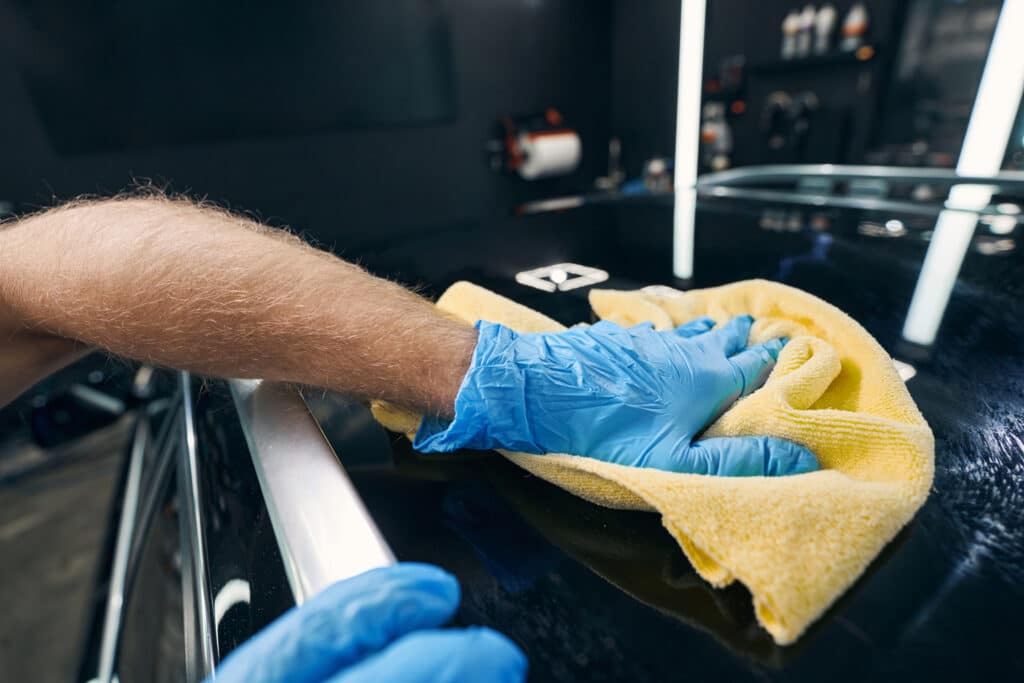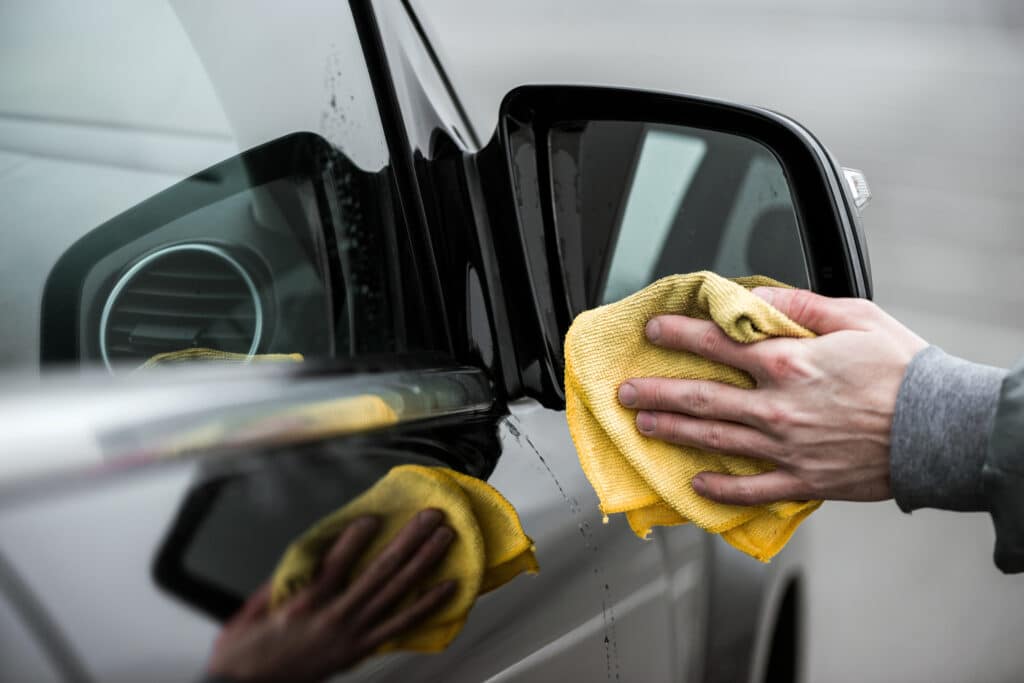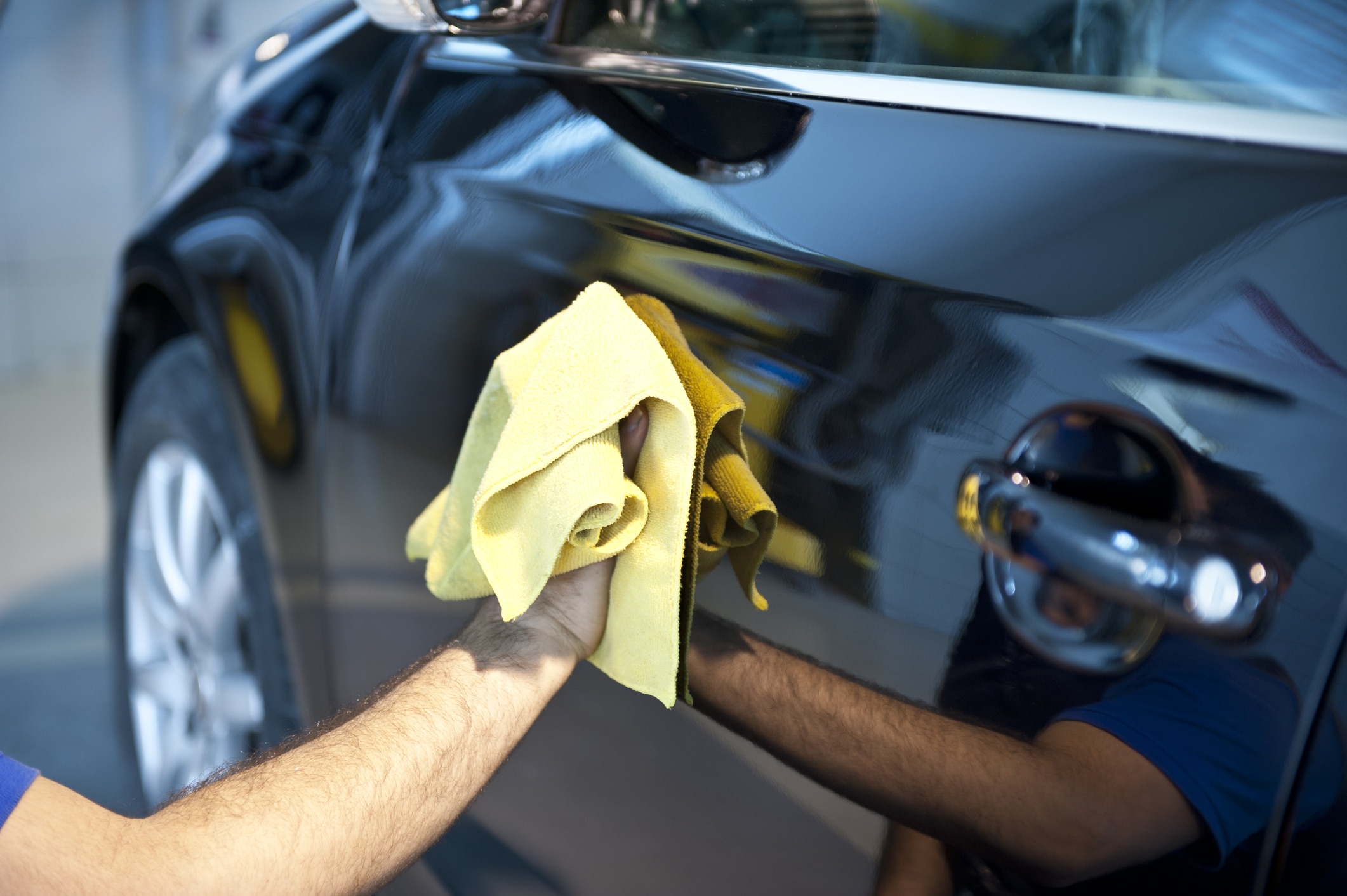It’s common for customers to have a few maintenance questions when the body shop hands over the keys to their vehicle after a paint job. Whether their car has undergone a SMART repair or a paint rework, they’ll want to know the best ways to protect their paintwork and avoid further damage that could bring them back into your body shop sooner than they’d like.
From how long they should wait before cleaning to the best practices for waxing, this guide is here to help you provide your customers with the best advice backed by reason. As body shop professionals, you hold responsibility for ensuring customers leave with a complete understanding of how to tackle maintenance for their vehicle’s exterior and why.
Top Customer Questions around Car Washing after a Paint Job
What do customers typically want to know about car washing after a fresh paint job? Below, we’ll answer a few of the most-asked questions and steer you in the right direction to keep your customers well-informed.
Can You Wash a Car After a Paint Job?
The short answer is yes – a car’s exterior can be washed after a fresh paint job. However, there can sometimes be confusion about how long customers should wait before washing their car.
For small paint touch-ups, customers can resume their normal car washing routine around a week after the application. But for larger or full paint jobs, customers will need to change their routine for a few months to protect the new paint. If all goes well though, customers can wash their reworked car as normal from around three months after the work is completed.

How Can Car Washing Damage Paint?
Car washing can damage paint regardless of whether it’s freshly finished or more than one year old. For a more recent paint finish, problems can occur when the paint hasn’t been able to cure properly before it comes into contact with the chemicals typically found in car shampoos. This can dull the overall finish or leave water spots on the surface that ruin the appearance, leaving your customer dissatisfied.
After parting with their cash for an automotive paint job, no customer wants to be left with marks or dull paintwork simply because they weren’t informed about what could happen if they wash their vehicle too soon after the work is completed. This is why it’s important to be transparent with customers about the damage that can be caused by washing fresh paintwork too quickly after application.
It’s also worth noting that the tools used for car washing can also damage paintwork of any age. Harsh brushes, abrasive tools and even strong pressure washers can cause scratches to appear. Repeated use of these harsh tools can even cause layers of paintwork to wear down leaving customers with damage that needs to be fixed by a professional.
When Should you Wash your Car After a Paint Job?
As a general rule, it’s typically best to advise waiting at least two weeks before washing a freshly painted vehicle. However, the amount of time that customers should leave the paint before washing the exterior will depend on the type of automotive paint used and the area covered. Most paints need at least 24 hours to cure fully, although waiting two weeks is a good benchmark for any paint type since this allows plenty of time for it to settle.
For paint touch-ups, customers should hand wash the car exterior for the first month following completion of the work. Care must be taken during this process and it’s important to only wash the reworked area if necessary. After the first month, more pressure can be used, and the entire exterior should be fine to wash as normal with no issues.
When the entire exterior has been re-finished, more care must be taken. Customers should try to keep the vehicle dry for the first two weeks and avoid situations that could cause dirt to stick to the vehicle. If dirt or debris sticks to the new paint, this should be removed with clean water and a clean microfibre cloth. After around two or three weeks, the car owner can start to clean the exterior if needed.
Car Wash Paint Protection: Precautions to Consider when Washing a Recently Painted Car
Body shop professionals should learn the best practices and precautions to understand how to advise their customers on washing a recently painted car. From washing to waxing, here’s what your customers should be doing alongside the practices they should be avoiding.
Washing

After waiting at least two weeks, a hand wash should be the best place for customers to start. Emphasise that the first wash should be as gentle as possible, and no harsh brushes or abrasive objects should be used anywhere on the painted surface.
After a further two weeks (one month total) have passed since the paint job was completed, customers should be able to resume their typical washing routine as normal. However, extra care should be taken for the first few washes and brushes should still be avoided since they can cause micro-abrasions to form on the paint and dull its shine over time.
Pressure washing and automatic car washes should also be avoided for up to three months at least because these can cause water spots and damage the layers of paint, alongside leaving micro-abrasions on the surface.
Waxing
Body shops should advise their customers against waxing over fresh car paintwork for a few months. The ingredients in car wax can potentially cause damage to the paint if sufficient time hasn’t passed to allow the paint to settle and dry completely. Because of this, you should recommend holding off on waxing the car’s exterior until the paintwork is around 60 to 90 days old as a precaution.
If your customer is keeping the exterior clean in the meantime, this shouldn’t cause any issues in terms of protecting the paintwork. However, if the customer is worried about dirt and debris from poor weather conditions building up on the fresh paint without a wax application to help protect it, then it might be better to advise painting the vehicle during a dry spell or in the summer.
Keeping paintwork clean and dry during winter is known for being a difficult task which can be worrisome for many customers who park outdoors or drive their cars regularly on dirty roads. Going without the wax for a while will be much less of a problem during a drier spell or in the summertime, so this is something worth discussing with your customer.
Whether you’re trying to improve your body shop’s customer relationships with helpful aftercare advice or want to prevent customer’s returning to you with issues that could be resolved with the correct prior knowledge, we hope this guide comes in handy.
For more expert advice on all things automotive-related, check out the JTAPE blog.

